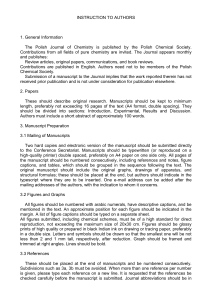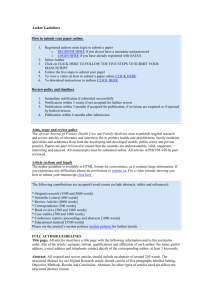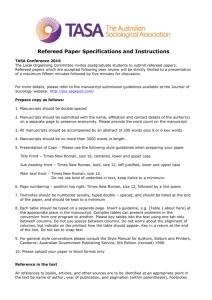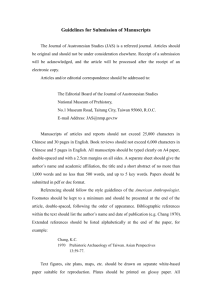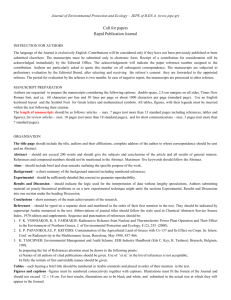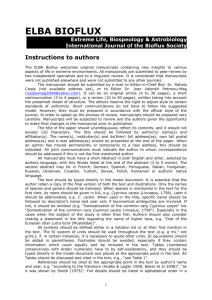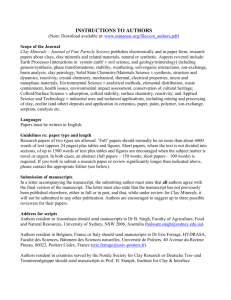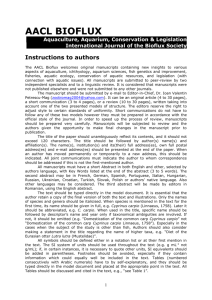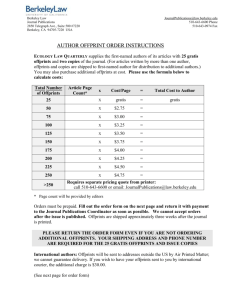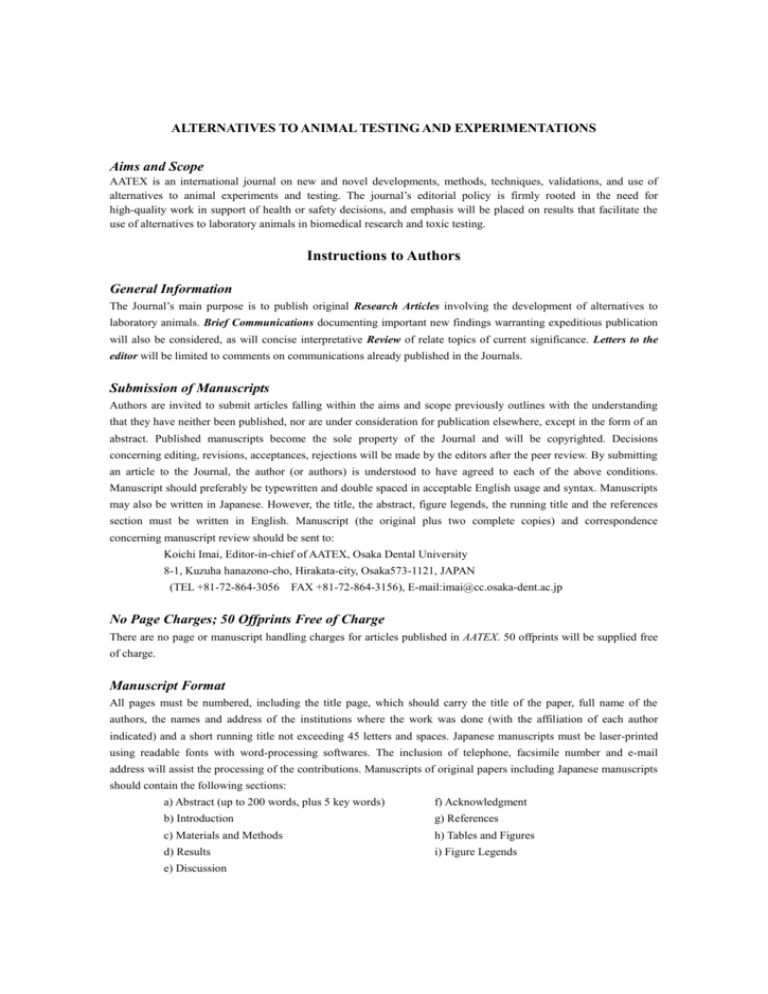
ALTERNATIVES TO ANIMAL TESTING AND EXPERIMENTATIONS
Aims and Scope
AATEX is an international journal on new and novel developments, methods, techniques, validations, and use of
alternatives to animal experiments and testing. The journal’s editorial policy is firmly rooted in the need for
high-quality work in support of health or safety decisions, and emphasis will be placed on results that facilitate the
use of alternatives to laboratory animals in biomedical research and toxic testing.
Instructions to Authors
General Information
The Journal’s main purpose is to publish original Research Articles involving the development of alternatives to
laboratory animals. Brief Communications documenting important new findings warranting expeditious publication
will also be considered, as will concise interpretative Review of relate topics of current significance. Letters to the
editor will be limited to comments on communications already published in the Journals.
Submission of Manuscripts
Authors are invited to submit articles falling within the aims and scope previously outlines with the understanding
that they have neither been published, nor are under consideration for publication elsewhere, except in the form of an
abstract. Published manuscripts become the sole property of the Journal and will be copyrighted. Decisions
concerning editing, revisions, acceptances, rejections will be made by the editors after the peer review. By submitting
an article to the Journal, the author (or authors) is understood to have agreed to each of the above conditions.
Manuscript should preferably be typewritten and double spaced in acceptable English usage and syntax. Manuscripts
may also be written in Japanese. However, the title, the abstract, figure legends, the running title and the references
section must be written in English. Manuscript (the original plus two complete copies) and correspondence
concerning manuscript review should be sent to:
Koichi Imai, Editor-in-chief of AATEX, Osaka Dental University
8-1, Kuzuha hanazono-cho, Hirakata-city, Osaka573-1121, JAPAN
(TEL +81-72-864-3056
FAX +81-72-864-3156), E-mail:imai@cc.osaka-dent.ac.jp
No Page Charges; 50 Offprints Free of Charge
There are no page or manuscript handling charges for articles published in AATEX. 50 offprints will be supplied free
of charge.
Manuscript Format
All pages must be numbered, including the title page, which should carry the title of the paper, full name of the
authors, the names and address of the institutions where the work was done (with the affiliation of each author
indicated) and a short running title not exceeding 45 letters and spaces. Japanese manuscripts must be laser-printed
using readable fonts with word-processing softwares. The inclusion of telephone, facsimile number and e-mail
address will assist the processing of the contributions. Manuscripts of original papers including Japanese manuscripts
should contain the following sections:
a) Abstract (up to 200 words, plus 5 key words)
f) Acknowledgment
b) Introduction
g) References
c) Materials and Methods
h) Tables and Figures
d) Results
i) Figure Legends
e) Discussion
References
All references must be cited in the body of the text by name an date, i.e. (Smith, 1985) and an alphabetical list of
references at the end of the manuscripts. Japanese references must be translated into English in order to include in the
reference section. If more than two authors 1are involves, used et al. after the first author’s name in text, but provide
all the author’s names in the reference list. If several papers by the same authors are cited for the same year, use a
lowercase letter to distinguish one from the other, i.e. (James, 1986a, 1986). Use the same designation in the
reference list. Use the following style in the reference list;
Journal and Periodicals:
Watanabe, M., Suzuki, K., and Kodama, S. (1995) Normal human cells at confluence get heat resistance
by accumulation of hsp72 in nucleus, Carcinogenesis, 16, 2373-2380.
Books:
Watanabe, M., Suzuki, K., and Kato, T. (1994) LET dependency of mutation induction at HPRT locus in
human cells irradiated with heavy ions, in Molecular Mechanisms in Radiation Mutagenesis and
Carcinogenesis, ed. by K. H. Chadwick and J. Thaker, pp.177-181, European Commission, Brussels.
Abbreviations and Units
Standard directionally abbreviations are generally accepted. Other abbreviations should be explained in parentheses
when the first mentioned. SI units are preferred.
Figures and Tables
Figures should be numbered consecutively (Fig. 1, Fig. 2, etc.) Plan all figures to fit the proportions of the printed
page (25.5 cm x 17 cm, B5). Line drawing should be carefully drawn in black ink on white paper or submitted as
glossy prints. Each figure should be identified on the back with the author’s name and the figure number.
Magnification should be indicated by scale bars. Tables should be typed-spaced on separate pages and should be
numbered consecutively (Table 1, Table 2, etc.)
Accepted Manuscripts
Authors of accepted manuscripts will be asked to submit the final version of the paper on diskettes, including text,
tables and figures, to the Editorial Office. Information on file formats will be sent to authors with the letter of
acceptance.
Proofs and Reprints
Proofs will be sent to the author. Reprint order forms and scale of reprint prices will be sent to author separately from
a Printing Company under the contact with the Journal. Authors will be received 50 repairs free of charge. Additional
reprints will be supplied at cost, if ordered when proofs are returned.
COPYRIGHT: 2006 by the Japanese Society of Alternative to Animal Experiments. All right reserved.



